Painting can be a chore, and few things are worse than finding bubbles after you've finished. But what causes these bubbles and how can you fix them? Worry no more! We did comprehensive research to answer your questions.
Bubbles or blisters may appear after painting for some reasons, like weak adhesion or excessive moisture in the area. You can resolve this issue with the steps below:
- Scrape off the bubbling or blistering spots.
- Clean the drywall with soap and water, and ensure the surface is dry.
- Apply a primer to the surface, then let it dry.
- Repaint the damaged spots a few layers until the color matches the old paint.
- Let the paint sit until it's dry.
This article will help you learn why bubbles appear on drywall after you paint it. We'll provide ways to fix and prevent the bubbles from reappearing. We'll see how to check for quality drywall and several different types of paint. Let's continue reading!
Drywall Bubbles After Painting - What to Do?
Bubbling or blistering is a term used to describe when the paint layer on a wall or other surface protrudes after painting. You can simply peel the bubbles off and repaint the damaged area. However, it's also important to know why such bubbles appear. See below for some reasons and how to fix them.
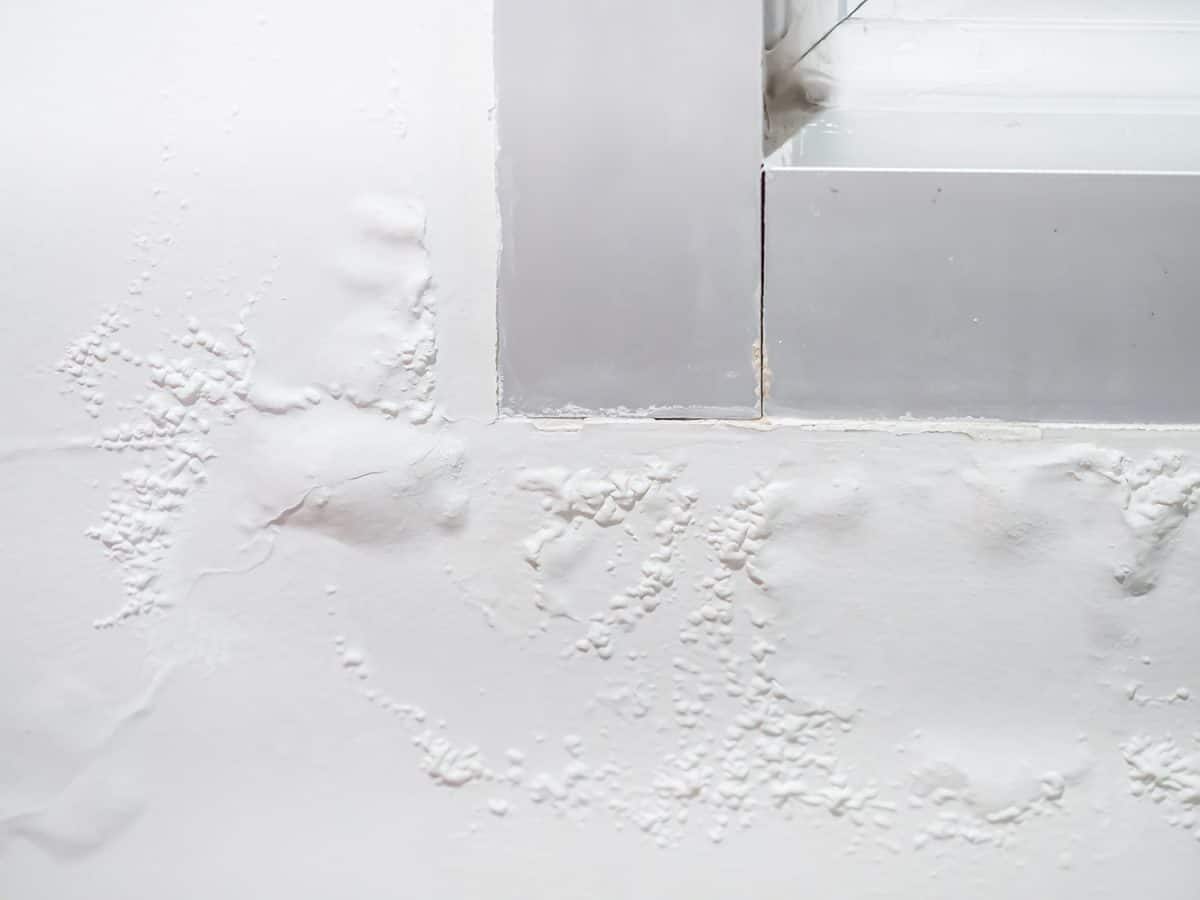
Weak Adhesion
It's possible that the paint isn't sticking well to the wall, causing it to drip down the wall and create bubbles. You should apply primer before you apply the paint. This way, you'll enhance the paint's adhesion.
Weak adhesion may also occur when there's mold growing on the surface. That's why it's important to clean the drywall thoroughly before painting.
You can use a mold killer to eliminate the mold.
See this mold killer on Amazon.
See below for the steps on how to remove the mold from drywall:
- Wear protective gear such as a mask and gloves.
- In a bucket, mix water and bleach. You can also add a detergent soap.
- Dip the scrubbing sponge in the bucket, then use it to remove the mold from the drywall.
- Frequently add more bleach and water to the surface until the mold is completely gone.
- Allow the surface to dry for a few hours, then repaint the drywall.
Excessive Moisture
Cold temperatures create moisture that penetrates through surfaces like drywall. Excessive humidity in the air can also lead to moisture building up. This is common during winter and rainy days. Even if you repaint the drywall, it may start to bubble again if the humidity level doesn't go down.
So, consider turning on a dehumidifier to help reduce unwanted moisture. You can also turn on your furnace. Basically, you just need to make the area hotter to reduce moisture. That's the time you can repaint the drywall when the humidity level drops.
Hot Temperature
Cold can be a problem, but your paint can also become damaged when it is too hot. You may notice the bubbles when the temperature reaches 90 degrees Fahrenheit.
Ideally, you should apply the paint when the room temperature ranges between 60 and 85 degrees Fahrenheit. However, this may differ depending on the product's recommended temperature.
What Paint to Use on Drywall?
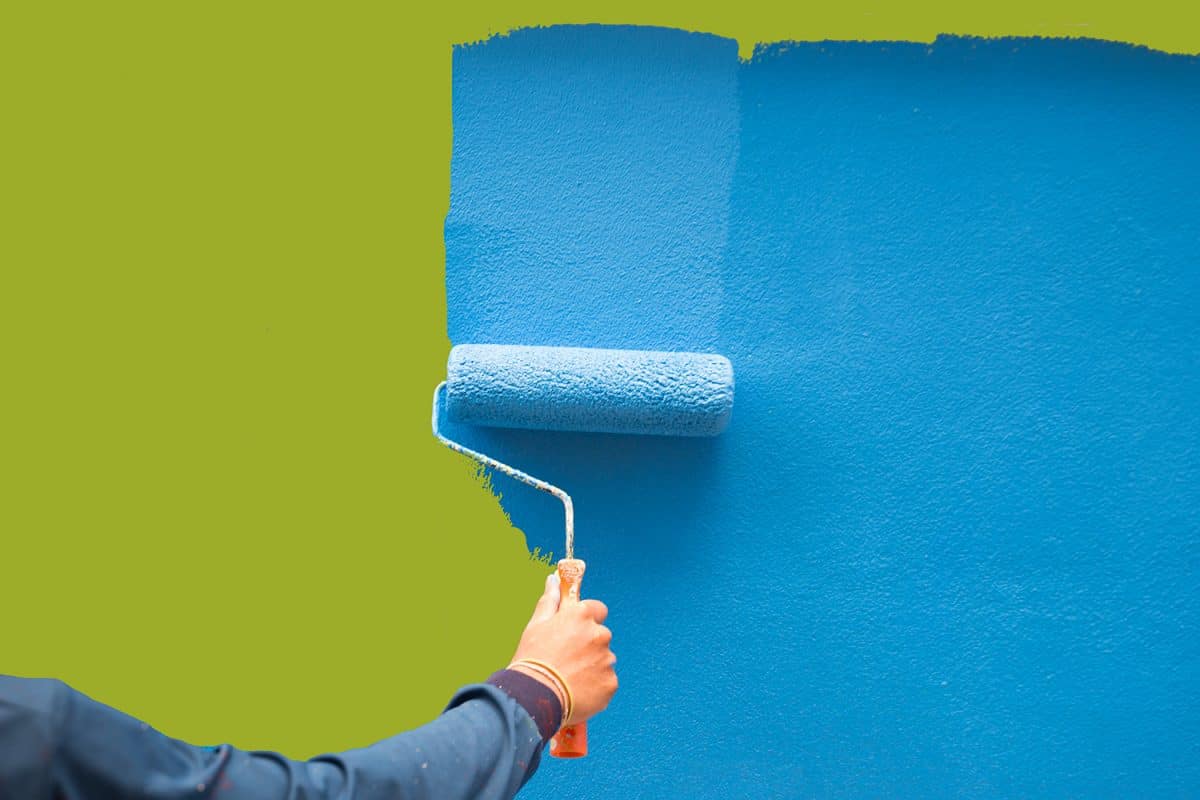
Paint manufacturers often specialize in paints in such a way that you can apply them on specified surfaces. So, you should know what paint to use on drywall. Familiarize yourself with these paints below.
Acrylic Paint
Acrylic paint is chemical-based and is composed of polymers and other materials. It becomes water-resistant when it dries. Due to its chemical composition, acrylic paint may have a strong smell during the painting process.
See this acrylic paint on Amazon.
Latex Paint
On the other hand, latex paint is water-based. It's also cheaper and can dry faster than acrylic. Latex paint is also easier to remove since it's water-based. One advantage of latex over acrylic paint is that latex paint doesn't produce strong odor when you apply it.
See this latex paint on Amazon.
Enamel Paint
Enamel paint is solvent-based, which means you can also use it on glass surfaces. It can resist discoloration and stick to almost any surface. However, enamel paint might be difficult to remove once applied.
See this enamel paint on Amazon.
What Are the Qualities of Drywall to Look For?
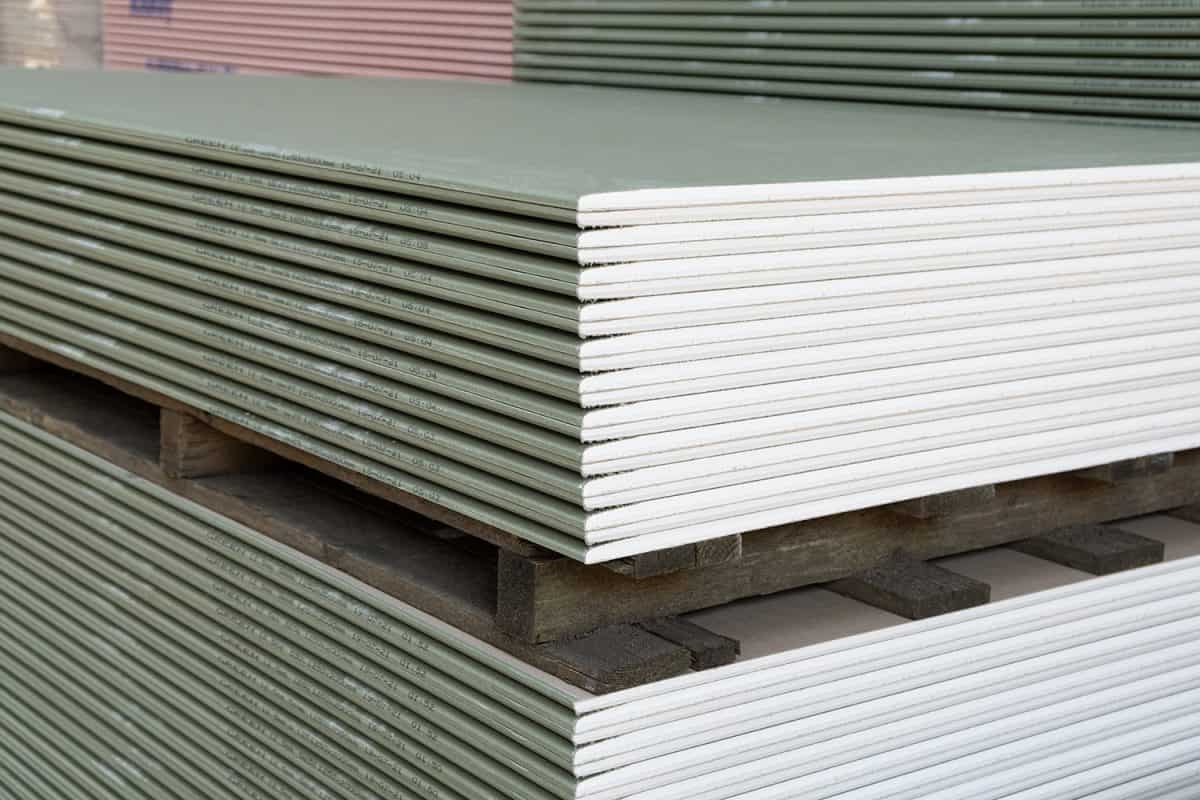
The problems with the paint can also come from the drywall itself, especially with lower-quality drywall. Following are some of the characteristics of high-quality drywall:
Gypsum Content
Gypsum is mainly composed of calcium sulfate, making it appear white. Ideally, drywall should have a gypsum content of 70 to 90 percent.
Most manufacturers include gypsum content in their products. So, you can check the drywall's packaging and find the percentage of gypsum on the label.
Thickness
Commonly, drywall should be 1/2 inch thick for residential use. However, this will depend on where you'll install the drywall. For instance, curved walls or arches may require from 1/4 to 3/8 inch of drywall.
Moisture Resistance
There's green drywall that's made to be more moisture-resistant. The extra protection comes from wax covering the surface.
Keep in mind that this drywall is more moisture resistant but not completely waterproof. Rather, green drywall is good for areas exposed to high humidity.
Fire Resistance
On the other hand, there's drywall made to resist heat. It's usually a combination of grey and red. It also contains a high amount of fiber and additives to withstand fire. Such drywall is often used on areas near a furnace.
Flexibility and Strength
If you intend to use drywall on curved areas, there's a light gray drywall that has fiberglass threads to strengthen the core. Such drywall is flexible yet strong enough for sudden impact.
How to Replace Drywall
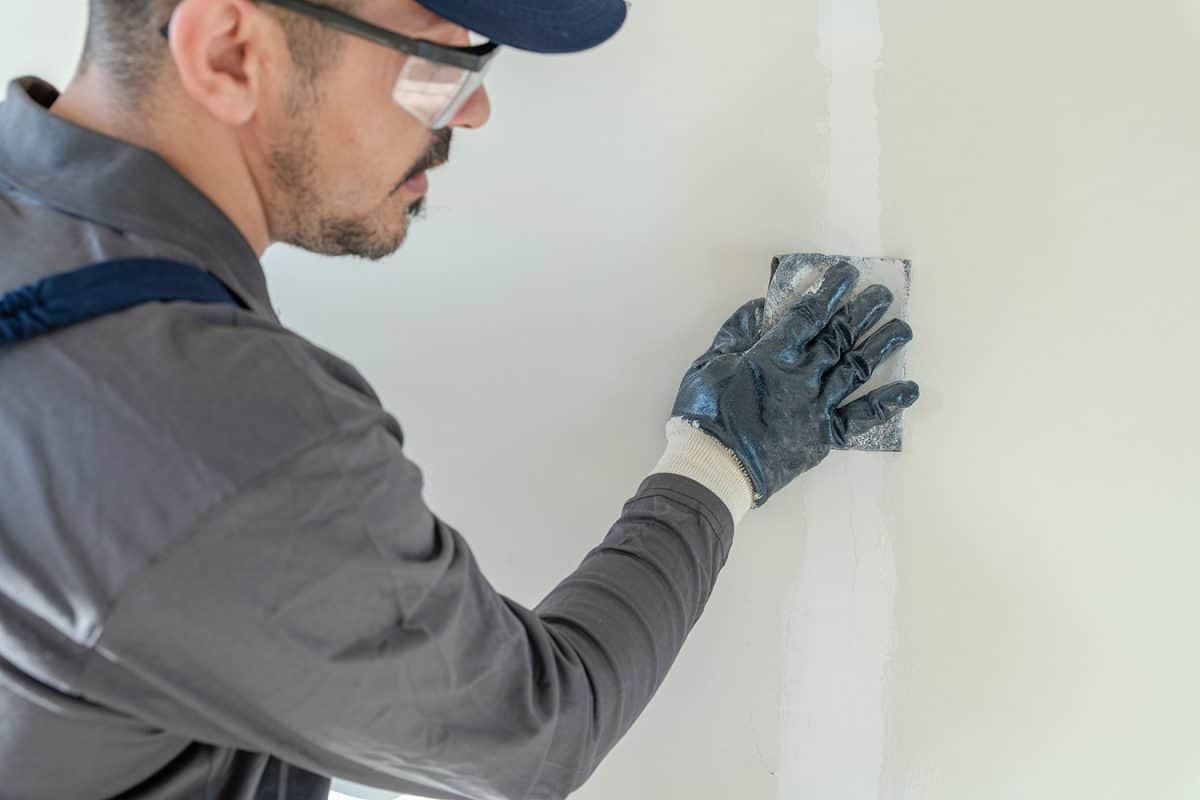
This is probably the last option you would like to consider if repainting doesn't work. However, there may be times when it is necessary, such as damage to the drywall that either needs repair or replacement.
It's important to consult a contractor to help you all throughout. However, you can refer to the steps below for replacing the drywall:
- Unscrew the drywall, then lift it from the bottom.
- Pry the side of the damaged drywall until it comes loose.
- Remove the remaining nails in the drywall.
- Prepare the new drywall, which should be the same size as the old.
- Use a glue gun along the joists.
- Carefully mount the drywall before the glue gets hard.
- Cut the drywall's excess edges.
- Mix the mud for drywall until it looks like a white cream.
- Apply the mud along the seams to bond the drywall.
- Overlap the drywall tape on the mud.
- Remove the excess mud around the tape using a knife or scraper.
- Apply two to three more layers of mud on the drywall.
- Allow each layer to dry to prevent bubbles.
- Use sandpaper to fine the mud.
- Apply primer to the drywall, then repeat sanding.
How Long Should You Wait Before Painting Drywall?
Upon installation, consider waiting for at least 24 hours before you paint the drywall. This is to allow the mud and primer to adhere into the surface. Otherwise, painting the drywall too early may weaken the adhesion.
How to Get a Rid of Paint's Odor
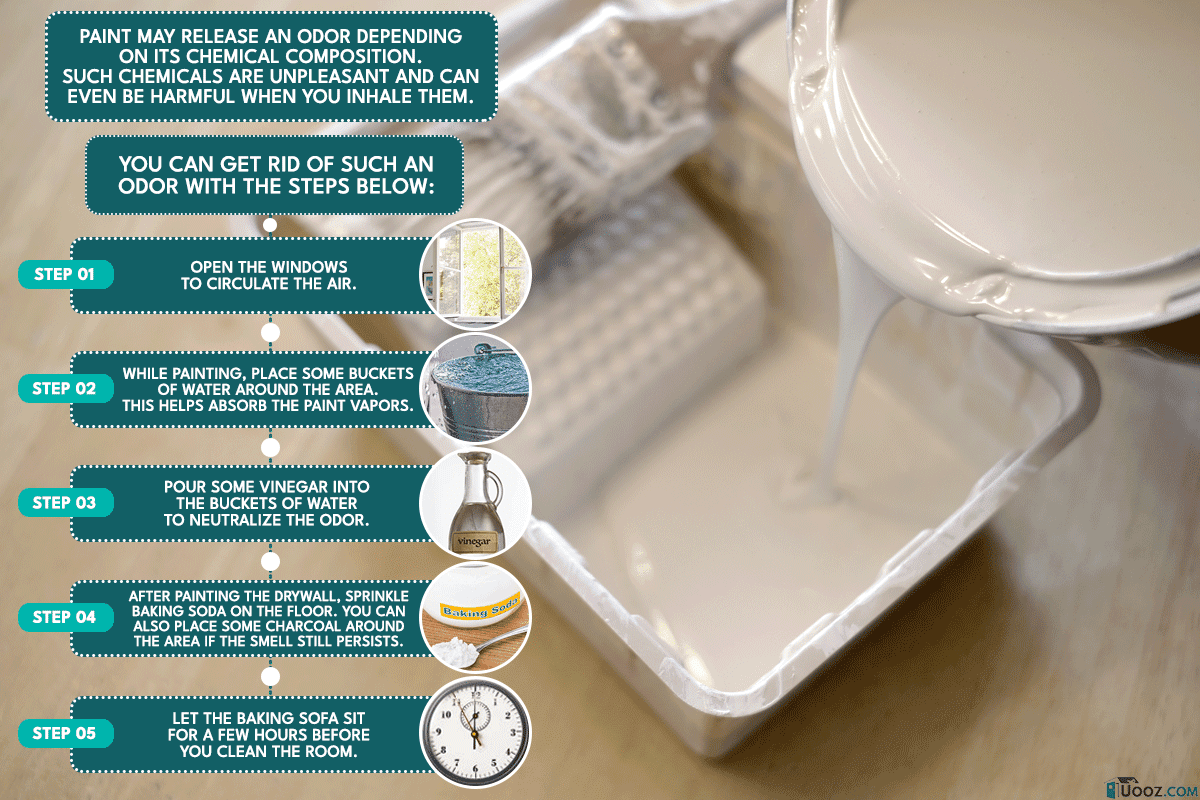
Paint may release an odor depending on its chemical composition. Such chemicals are unpleasant and can even be harmful when you inhale them. You can get rid of such an odor with the steps below:
- Open the windows to circulate the air.
- While painting, place some buckets of water around the area. This helps absorb the paint vapors.
- Pour some vinegar into the buckets of water to neutralize the odor.
- After painting the drywall, sprinkle baking soda on the floor. You can also place some charcoal around the area if the smell still persists.
- Let the baking sofa sit for a few hours before you clean the room.
How Long Does Drywall Last?
Drywall usually lasts from 40 to 70 years, depending on the method of installation and environmental factors. Keep in mind that the weather can affect humidity and temperature.
For instance, winter can cause moisture buildup which will add weight to the drywall. So, always clean the drywall even after painting to retain its durability.
Conclusion
We're glad you read up to this point, in which we learned why the paint bubbles after applying it to the drywall. We realized some factors were affecting the paint, such as room temperature. Always consider the drywall's quality to maximize its essence.
Do you want to learn more with us? You'll love our articles here:
Why Does My Drywall Keep Cracking? [And What To Do About It]




